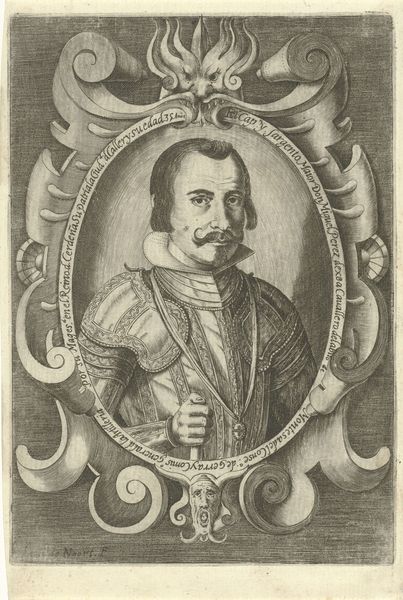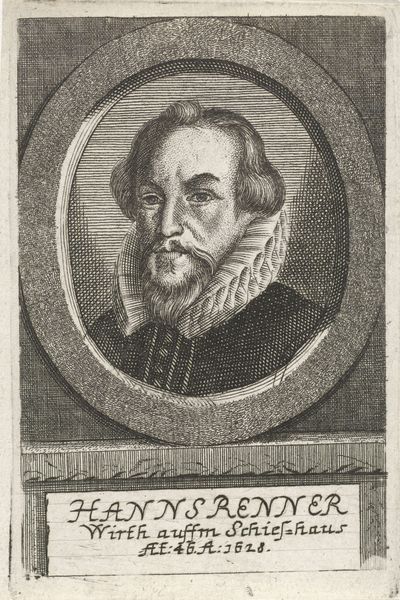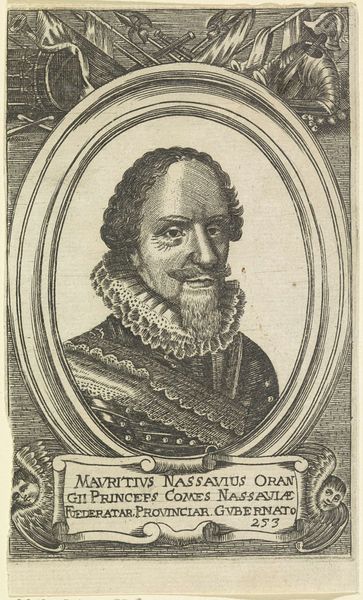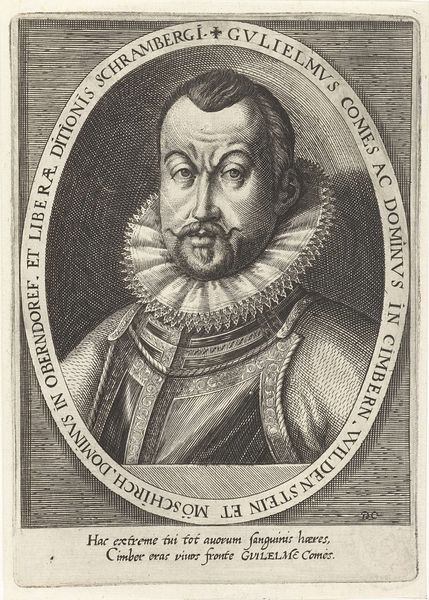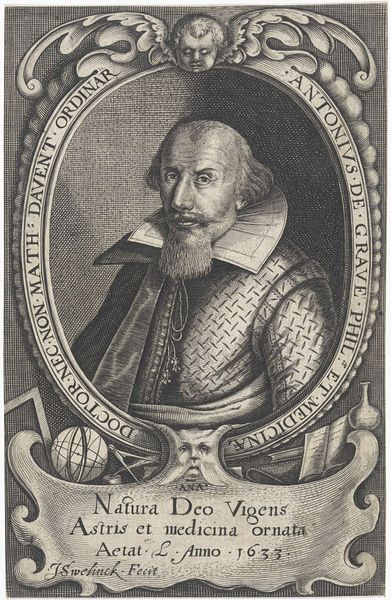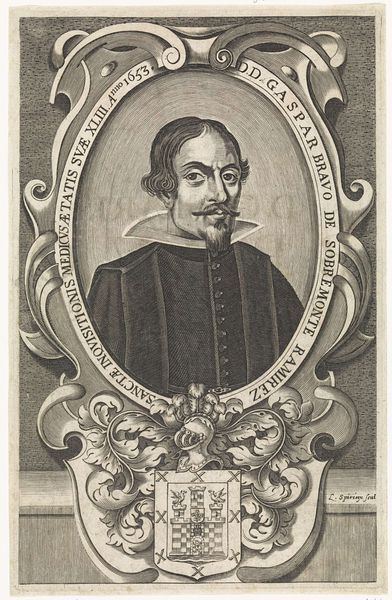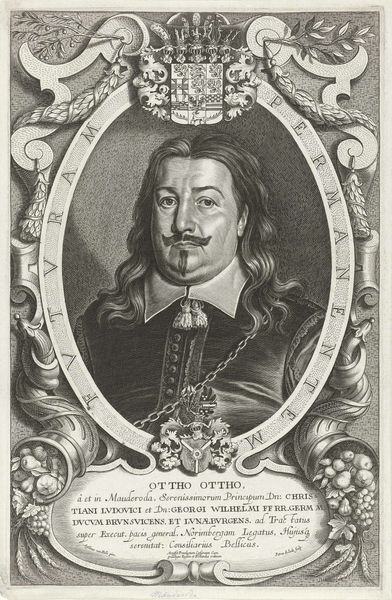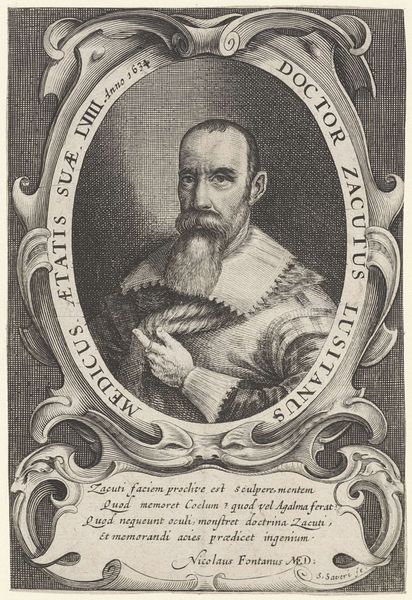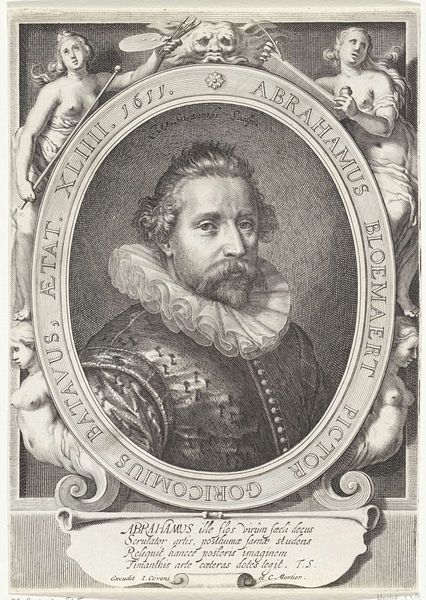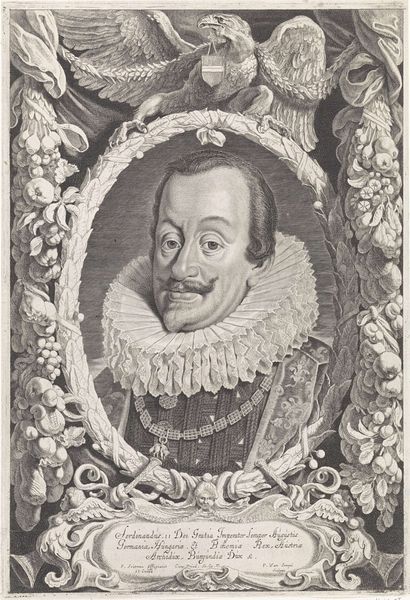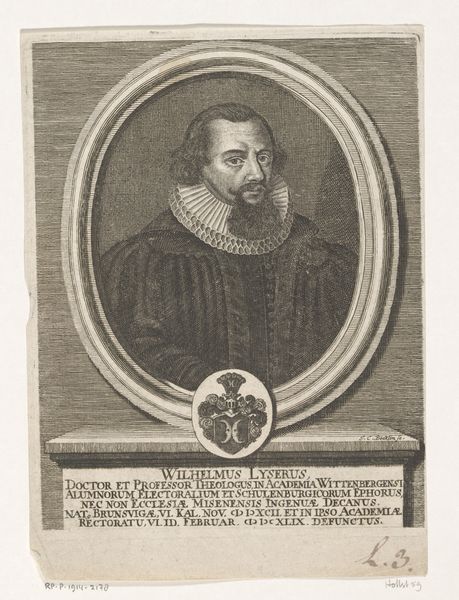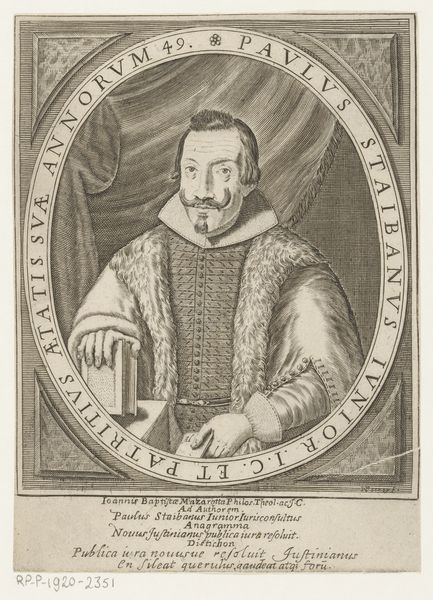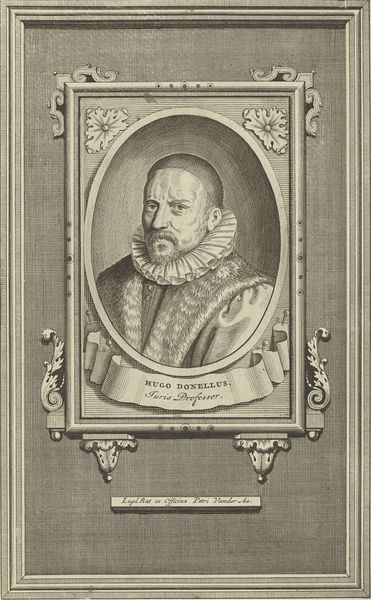
metal, etching, intaglio, engraving
#
portrait
#
baroque
#
metal
#
etching
#
intaglio
#
caricature
#
history-painting
#
engraving
Dimensions: height 162 mm, width 115 mm
Copyright: Rijks Museum: Open Domain
Editor: This is a portrait of Peter Marschall, an etching created between 1622 and 1624 by Paul de Zetter. The detail is just incredible, the lines are so precise. What stands out to me is the framing of the portrait with those swirling inscriptions. What can you tell me about it? Curator: I see here an encoding of the social and religious upheavals of the period, carefully etched into the very lines of this portrait. The inscriptions, framing Marschall, tell a story of religious exile: "Heidelberg gave birth to Petrus Mareschallus… but, leaving his homeland on account of love for religion, he died a greater exile in Strasbourg." Doesn’t this suggest the profound impact of the Reformation on individual lives and communities? Editor: Absolutely. So, this isn't just a portrait of an individual, but a representation of larger historical forces? Curator: Precisely. Consider how the artist uses intaglio techniques, pressing the narrative into the metal. It's a material representation of the pressures exerted on individuals like Marschall. And note the style. What can we say about its period? Editor: It’s labeled as Baroque, I see the clear, contrasting textures in his face and clothing. But there’s also a restraint there... Curator: Yes! Think about what that restraint might signify in relation to the religious tensions it evokes. This portrait, beyond simply depicting a man, embodies the displacement and resilience born from religious conflict, visualized through artistic choices deeply embedded in the historical and cultural context of the time. Is there anything else that interests you? Editor: Well, the Latin inscription had me wondering about the intended audience for the portrait... Curator: That’s an astute observation. Who would be reading that and engaging with it? And what message are they meant to extract? Considering those questions lets us unlock a great deal more historical context surrounding this portrait. Editor: I’ve never thought about portraits containing entire social histories before! That completely changes how I see art from this period. Curator: Indeed, it allows us to weave the personal with the political, understanding art as an intersectional space.
Comments
No comments
Be the first to comment and join the conversation on the ultimate creative platform.
